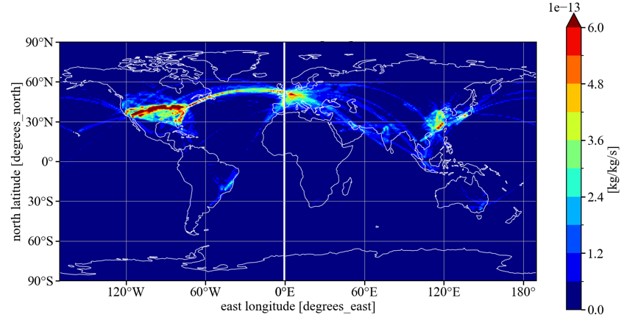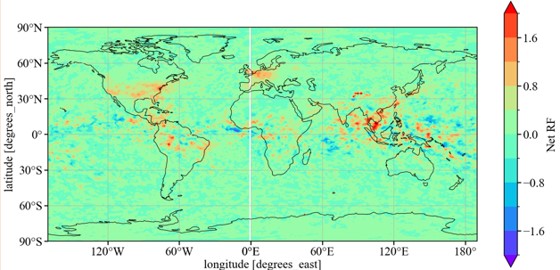Numerical analysis of contrail formation process and climate impact by aviation-induced cirrus by emissions from aircraft with alternative aviation fuels
JAXA Supercomputer System Annual Report February 2024-January 2025
Report Number: R24EDA201C35
Subject Category: Aeronautical Technology
- Responsible Representative: Atsushi Kanda, Aviation Technology Directorate, Aviation Environmental Sustainability Innovation Hub
- Contact Information: Keiichi Okai, Aeronautical Technology Directorate, Aviation Environmental Sustainability Innovation Hub(okai.keiichi@jaxa.jp)
- Members: Keiichi Okai, Takuma Tadokoro, Ryo Yoshida
Abstract
In recent years, carbon neutrality has been declared in the aviation sector. As one of the greenhouse effects of aircraft exhaust gas, persistent contrail and contrail cirrus formation have been recognized as quite important most recently due to its expected large effects in radiative forcing. The present study investigates the effects of fuel characteristics of the major alternative aviation fuels (SAF and hydrogen) on the radiative forcing of contrails using a global climate model.
Reference URL
N/A
Reasons and benefits of using JAXA Supercomputer System
The global atmospheric calculations with additional contrail microphysics model require large computational resources.
Achievements of the Year
Based on the distribution data of the water vapor emission of simulated flight missions, the vertically averaged distribution of water vapor emission for jet-fuel aircraft is described as seen in Fig. 1.
Figure 2 shows the distribution of contrail radiative forcing for kerosene aircraft obtained by one-year simulation. The contrail radiative forcing for jet-fueled aircraft was estimated to be 67mW/m2, which is consistent with the available literature. Trials on the application of alternative fuel effects were investigated.
Publications
N/A
Usage of JSS
Computational Information
- Process Parallelization Methods: MPI
- Thread Parallelization Methods: N/A
- Number of Processes: 720
- Elapsed Time per Case: 11 Hour(s)
JSS3 Resources Used
Fraction of Usage in Total Resources*1(%): 0.00
Details
Please refer to System Configuration of JSS3 for the system configuration and major specifications of JSS3.
| System Name | CPU Resources Used(Core x Hours) | Fraction of Usage*2(%) |
|---|---|---|
| TOKI-SORA | 0.00 | 0.00 |
| TOKI-ST | 0.00 | 0.00 |
| TOKI-GP | 0.00 | 0.00 |
| TOKI-XM | 0.00 | 0.00 |
| TOKI-LM | 0.00 | 0.00 |
| TOKI-TST | 0.00 | 0.00 |
| TOKI-TGP | 0.00 | 0.00 |
| TOKI-TLM | 0.00 | 0.00 |
| File System Name | Storage Assigned(GiB) | Fraction of Usage*2(%) |
|---|---|---|
| /home | 1759.00 | 1.19 |
| /data and /data2 | 148330.00 | 0.71 |
| /ssd | 38250.00 | 2.05 |
| Archiver Name | Storage Used(TiB) | Fraction of Usage*2(%) |
|---|---|---|
| J-SPACE | 0.29 | 0.00 |
*1: Fraction of Usage in Total Resources: Weighted average of three resource types (Computing, File System, and Archiver).
*2: Fraction of Usage:Percentage of usage relative to each resource used in one year.
ISV Software Licenses Used
| ISV Software Licenses Used(Hours) | Fraction of Usage*2(%) | |
|---|---|---|
| ISV Software Licenses(Total) | 0.00 | 0.00 |
*2: Fraction of Usage:Percentage of usage relative to each resource used in one year.
JAXA Supercomputer System Annual Report February 2024-January 2025




